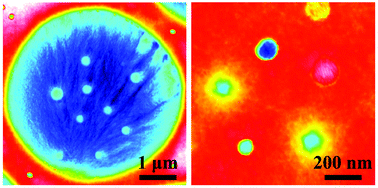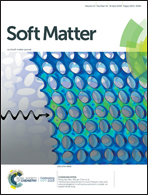Controlling the pore size in conjugated polymer films via crystallization-driven phase separation†
Abstract
A wide range of possible applications in sensors and optoelectronic devices have focused considerable attention on porous membranes made of semi-conducting polymers. In this study, porous films of poly(3-hexylthiophene) (P3HT) were conveniently constructed through spin-coating of solutions of a blend of P3HT and polyethylene glycol (PEG). Pores were formed by phase separation driven simultaneously by incompatibility and crystallization. The influence of the polymer concentration (c), molecular weight (Mn) and spin-coating temperature (Tsp) on the pore size and structure was investigated. With increasing c from 0.5 to 5.0 wt%, the pore diameter (d) varied from ≈1.3 μm to ≈38 μm. Similarly, we observed a substantial increase of d with increasing Mn of PEG, while changing Mn of P3HT did not affect d. Micron- and nano-scale pores coexisted in porous P3HT films. While incompatibility of P3HT and PEG caused the formation of nano-pores, micron-scale pores resulted from crystallization in the PEG-rich domains by forcing PEG molecules to diffuse from the surrounding PEG–P3HT blend region to the crystal growth front.



 Please wait while we load your content...
Please wait while we load your content...